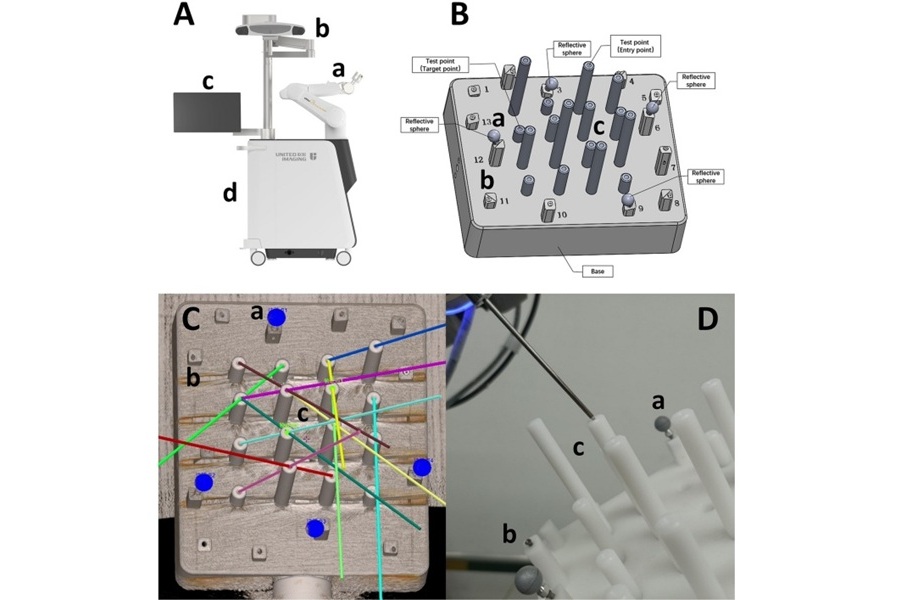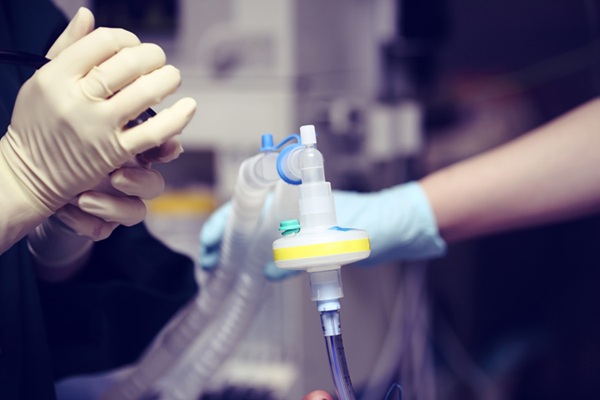High Brain Iron Hastens Alzheimer's Disease
|
By HospiMedica International staff writers Posted on 14 Jun 2015 |
High ferritin levels in the cerebrospinal fluid (CSF) could increase the risk of developing Alzheimer's disease (AD) and accelerate the cognitive decline that comes with it, according to a new study.
Researchers at the University of Melbourne (Australia), Cornell University (Ithaca, NY, USA), and other partners of the Alzheimer’s Disease Neuroimaging Initiative (ADNI; La Jolla, CA, USA) conducted a study to examine the possible link between brain iron levels and cognitive decline in three groups over seven years. Participants included 91 people with normal cognition, 144 people with mild cognitive impairment, and 67 people with diagnosed AD.
The researchers first determined participants’ brain iron levels by measuring the amount of ferritin in the CSF, which surrounds the brain. They continued to perform regular tests and magnetic resonance imaging (MRI) scans to track cognitive decline and changes in the brain over the study period. The results showed that people with higher levels of ferritin (in all groups) suffered faster declines in cognitive abilities, and accelerated shrinking of the hippocampus. Levels of ferritin were also a linked to a greater likelihood of people with mild cognitive impairment developing AD.
The researchers also found that higher levels of ferritin corresponded to earlier ages for diagnoses of AD, roughly three months for every 1 nanogram per milliliter increase. Another finding was that the ferritin was strongly associated with CSF apolipoprotein E (APOE-e4) levels, and that those participants with the AD risk allele, APOE-ɛ4, a gene variant which is known to be the strongest genetic risk factor for the disease, had the highest levels of iron in their brains. The study was published on May 19, 2015, in Nature Communications.
“We think that iron is contributing to the disease progression of Alzheimer's disease; this is strong evidence to base a clinical trial on lowering iron content in the brain to see if that would impart a cognitive benefit,” said lead author neuroscientist Scott Ayton, PhD, of the University of Melbourne. “Lowering CSF ferritin, as might be expected from a drug like deferiprone, could conceivably delay mild cognitive impairment conversion to Alzheimer's disease by as much as three years. Perhaps it's time to refocus the field on looking at iron as a target.”
AD, named after Dr. Alois Alzheimer, who first described it, is a physical disease that is the result of protein buildup in the brain, forming structures called plaques and tangles. These lead to the loss of connections between nerve cells, and eventually to their death and loss of brain tissue. As AD progresses, memory loss, communication, reasoning, and orientation become increasingly severe, and sufferers need more and more day-to-day support from those who care for them. AD affects almost 50% of those over the age of 85, and is the sixth leading cause of death in the US.
Related Links:
University of Melbourne
Cornell University
Researchers at the University of Melbourne (Australia), Cornell University (Ithaca, NY, USA), and other partners of the Alzheimer’s Disease Neuroimaging Initiative (ADNI; La Jolla, CA, USA) conducted a study to examine the possible link between brain iron levels and cognitive decline in three groups over seven years. Participants included 91 people with normal cognition, 144 people with mild cognitive impairment, and 67 people with diagnosed AD.
The researchers first determined participants’ brain iron levels by measuring the amount of ferritin in the CSF, which surrounds the brain. They continued to perform regular tests and magnetic resonance imaging (MRI) scans to track cognitive decline and changes in the brain over the study period. The results showed that people with higher levels of ferritin (in all groups) suffered faster declines in cognitive abilities, and accelerated shrinking of the hippocampus. Levels of ferritin were also a linked to a greater likelihood of people with mild cognitive impairment developing AD.
The researchers also found that higher levels of ferritin corresponded to earlier ages for diagnoses of AD, roughly three months for every 1 nanogram per milliliter increase. Another finding was that the ferritin was strongly associated with CSF apolipoprotein E (APOE-e4) levels, and that those participants with the AD risk allele, APOE-ɛ4, a gene variant which is known to be the strongest genetic risk factor for the disease, had the highest levels of iron in their brains. The study was published on May 19, 2015, in Nature Communications.
“We think that iron is contributing to the disease progression of Alzheimer's disease; this is strong evidence to base a clinical trial on lowering iron content in the brain to see if that would impart a cognitive benefit,” said lead author neuroscientist Scott Ayton, PhD, of the University of Melbourne. “Lowering CSF ferritin, as might be expected from a drug like deferiprone, could conceivably delay mild cognitive impairment conversion to Alzheimer's disease by as much as three years. Perhaps it's time to refocus the field on looking at iron as a target.”
AD, named after Dr. Alois Alzheimer, who first described it, is a physical disease that is the result of protein buildup in the brain, forming structures called plaques and tangles. These lead to the loss of connections between nerve cells, and eventually to their death and loss of brain tissue. As AD progresses, memory loss, communication, reasoning, and orientation become increasingly severe, and sufferers need more and more day-to-day support from those who care for them. AD affects almost 50% of those over the age of 85, and is the sixth leading cause of death in the US.
Related Links:
University of Melbourne
Cornell University
Latest Critical Care News
- Smart Nanomaterials Detect and Treat Traumatic Brain Injuries Simultaneously
- Earlier Blood Transfusion Could Reduce Heart Failure and Arrhythmia in Heart Disease Patients
- 'Smart' Shirt Detects Epileptic Seizures in Real Time
- Skin Patch Measures Effectiveness of Flu/COVID Vaccines in 10 Minutes
- Complete Revascularization Reduces Risk of Death from Cardiovascular Causes
- Tiny Fish-Inspired Robots Navigate Through Body to Deliver Targeted Drug Therapy
- Coronary Artery Stenosis Could Protect Patients from Pulmonary Embolism Effects
- Sweat-Powered Sticker Turns Drinking Cup into Health Sensor
- Skin-Mounted 3D Microfluidic Device Analyzes Sweat for Real-Time Health Assessment
- New Therapeutic Brain Implants to Eliminate Need for Surgery
- Stem Cell Patch Gently Heals Damaged Hearts Without Open-Heart Surgery
- Biomaterial Vaccines to Make Implanted Orthopedic Devices Safer
- Deep Learning Model Predicts Sepsis Patients Likely to Benefit from Steroid Treatment
- Programmable Drug-Delivery Patch Promotes Healing and Regrowth After Heart Attack
- Breakthrough Ultrasound Technology Measures Blood Viscosity in Real Time
- Magnetically Activated Microscopic Robotic Swarms Could Deliver Medicine Inside Body
Channels
Surgical Techniques
view channelGroundbreaking Procedure Combines New Treatments for Liver Tumors
Removing or destroying liver tumors often requires patients to undergo two separate procedures, exposing them to multiple hospital stays, repeated anesthesia, and longer recovery times. Traditional approaches... Read moreAblation Reduces Stroke Risk Associated with Atrial Fibrillation
Atrial fibrillation (AFib) greatly increases the risk of stroke, blood clots, heart failure, and death, and millions of people in the U.S. are expected to be affected in the coming years.... Read morePatient Care
view channel
Revolutionary Automatic IV-Line Flushing Device to Enhance Infusion Care
More than 80% of in-hospital patients receive intravenous (IV) therapy. Every dose of IV medicine delivered in a small volume (<250 mL) infusion bag should be followed by subsequent flushing to ensure... Read more
VR Training Tool Combats Contamination of Portable Medical Equipment
Healthcare-associated infections (HAIs) impact one in every 31 patients, cause nearly 100,000 deaths each year, and cost USD 28.4 billion in direct medical expenses. Notably, up to 75% of these infections... Read more
Portable Biosensor Platform to Reduce Hospital-Acquired Infections
Approximately 4 million patients in the European Union acquire healthcare-associated infections (HAIs) or nosocomial infections each year, with around 37,000 deaths directly resulting from these infections,... Read moreFirst-Of-Its-Kind Portable Germicidal Light Technology Disinfects High-Touch Clinical Surfaces in Seconds
Reducing healthcare-acquired infections (HAIs) remains a pressing issue within global healthcare systems. In the United States alone, 1.7 million patients contract HAIs annually, leading to approximately... Read moreHealth IT
view channel
Printable Molecule-Selective Nanoparticles Enable Mass Production of Wearable Biosensors
The future of medicine is likely to focus on the personalization of healthcare—understanding exactly what an individual requires and delivering the appropriate combination of nutrients, metabolites, and... Read moreBusiness
view channel
Philips and Masimo Partner to Advance Patient Monitoring Measurement Technologies
Royal Philips (Amsterdam, Netherlands) and Masimo (Irvine, California, USA) have renewed their multi-year strategic collaboration, combining Philips’ expertise in patient monitoring with Masimo’s noninvasive... Read more
B. Braun Acquires Digital Microsurgery Company True Digital Surgery
The high-end microsurgery market in neurosurgery, spine, and ENT is undergoing a significant transformation. Traditional analog microscopes are giving way to digital exoscopes, which provide improved visualization,... Read more
CMEF 2025 to Promote Holistic and High-Quality Development of Medical and Health Industry
The 92nd China International Medical Equipment Fair (CMEF 2025) Autumn Exhibition is scheduled to be held from September 26 to 29 at the China Import and Export Fair Complex (Canton Fair Complex) in Guangzhou.... Read more














